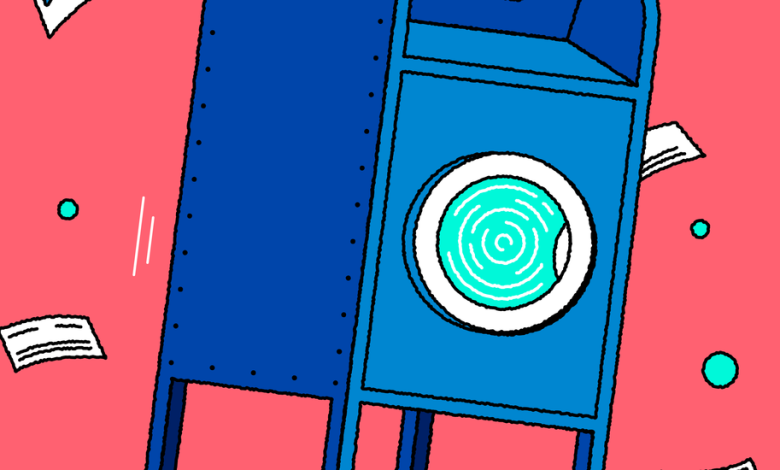Check Fraud Is on the Rise. Here’s What You Can Do to Prevent It.

If you use paper checks and send them through the mail, it may be time to stop.
Check fraud linked to mail theft has surged across the country, according to a recent alert to banks from the Financial Crimes Enforcement Network, part of the Treasury Department.
The use of paper checks has been declining for decades, yet criminals have been increasingly targeting mailboxes to commit check fraud, the financial crimes network, known as FinCEN, said.
Last year, reports of check fraud filed by banks nearly doubled to 680,000, from 350,000 in 2021, according to FinCEN. The network said it issued the alert last month in collaboration with the U.S. Postal Inspection Service, the law enforcement arm of the post office. The service said it received more than 299,000 complaints of mail theft from March 2020 through February 2021, a 161 percent increase from a year earlier.
In one common approach known as “check washing,” detailed in the FinCEN alert, criminals steal signed checks from postal boxes, then use common chemicals like nail polish remover to remove the dollar amount and the name of the “payee,” or recipient. Then they rewrite the checks for a new recipient and a larger sum — often hundreds or thousands of dollars more — before cashing the check.
AARP, the advocacy group for older Americans, recently warned its members about check washing. Low-income, older consumers were more likely than other groups to pay with paper checks, the Federal Reserve Bank of Atlanta noted in 2020.
“It’s a big deal right now,” said David Maimon, a criminal justice professor and director of the evidence-based cybersecurity research group at Georgia State University in Atlanta.
Check washing, Dr. Maimon said, has evolved from small-time criminals pilfering a check or two from residential mailboxes to more organized efforts involving the theft of mail in bulk from postal collection boxes.
Criminals sell copies of washed checks online, he said, or stolen or counterfeit master keys, known as arrow keys, that allow access to Postal Service collection boxes. (In some cases, postal carriers have been robbed at gunpoint for their keys; in others, postal employees are accused of stealing checks at sorting and distribution centers, FinCEN’s report said.) They then recruit others to loot collection boxes, act as check cashers (often using fake IDs) or open accounts used for cashing doctored checks.
“It’s an elaborate supply chain,” said Dr. Maimon, whose researchers monitor sites on the so-called dark web to track illegal activity, including check washing. Encrypted messaging apps make it easier for criminals to coordinate and share information, he said.
Lawrence Brandon was recently targeted for check fraud. In October, he recalled mailing a check for $57.50 for an insurance premium, he said in a phone interview. But his bank statement indicated that a check with that number had been paid in the amount of $4,950.
“I certainly don’t pay that kind of money, unless I know the person well,” said Mr. Brandon, who said he was an 80-year-old retired special-needs teacher in Philadelphia.
He reported the fraud to Citizens Bank and received a claim number in December, he said, but had not received the funds, forcing him to draw on savings to pay some expenses. A Citizens spokeswoman said she couldn’t comment on a specific customer case, but she requested Mr. Brandon’s claim number so she could look into the situation.
Why is check fraud surging? Criminals who intercepted stimulus checks and other pandemic aid may have turned to new sources of revenue when those payments dried up, said Paul Benda, senior vice president of operational risk and cybersecurity at the American Bankers Association.
Also, “the mail system isn’t as secure as everyone thought it was,” he said. An audit report in 2020 found that Postal Service management controls over arrow keys were “ineffective,” increasing the risk that lost or stolen keys were not detected.
The theft of mail puts not only personal checks at risk but also business checks, tax refunds and government benefits, FinCEN said. Cashing those checks, however, typically requires more complicated techniques than simply washing them, Dr. Maimon said. Criminals may also have to steal the identity of the recipient or, in the case of a business check, create a fake business with a similar name, then open a bank account in that name.
The Postal Inspection Service is working with the Postal Service to make blue boxes more secure, like fitting them with “rakes” with metal teeth to make it harder for thieves to fish out envelopes, said Michael W. Martel, a spokesman for the inspection service.
Other, more high-tech fixes are also being considered, Mr. Martel said, but he couldn’t offer a timeline for updates. There are “thousands upon thousands” of postal boxes, he said, and upgrades must be engineered and tested before being deployed.
“The Postal Inspection Service,” he said, “takes the sanctity of the U.S. mail very seriously.”
Here are questions and answers related to check fraud via the mail:
Am I liable for funds taken from my account with a washed check?
No, said Mr. Benda of the American Bankers Association. Consumers are not liable for fraudulent or counterfeit checks. “The bank will make you whole,” he said. (Depending on the state, customers usually have 30 to 60 days from the date of their last bank statement to report unauthorized checks.)
But banks must investigate reported fraud and sort out which institution is liable for the loss, so the time it takes to return your money may vary. Customers may request a provisional credit while the inquiry proceeds, Mr. Benda said.
American Banker, a trade publication, reported last year that smaller banks had complained that because of increased fraud, big banks were dragging their feet on covering the funds from stolen checks, taking weeks or months to pay.
Should I avoid mailing checks?
Yes. “We really recommend that if you can, use electronic payment methods,” Mr. Benda said.
If you must mail a check, it’s best to walk into a post office and drop it in the lobby mail slot or hand it to a postal worker. “It’s risky to use the blue boxes,” Dr. Maimon said.
If you have to use a blue box, drop in the check before the day’s last scheduled pickup so it doesn’t sit in the box overnight. Don’t put checks in your home mailbox for pickup and raise the little flag to alert carriers, which signals to potential thieves that there’s something inside.
Monitor your bank account online regularly to confirm the checks that have been cashed and to see if anything seems suspicious. “You need to be an advocate for yourself and check your account,” said Amy Nofziger, director of victim support for AARP Fraud Watch Network.
If you are expecting a check or other important mail, Ms. Nofziger said, consider using the Postal Service’s free Informed Delivery service, which allows you to get a preview of mail expected to arrive soon.
What should I do if I’m a victim of check washing?
If you think a check you’ve written was intercepted in the mail, promptly contact your bank and file a report with the Postal Inspection Service and your local police department, Mr. Martel said.




